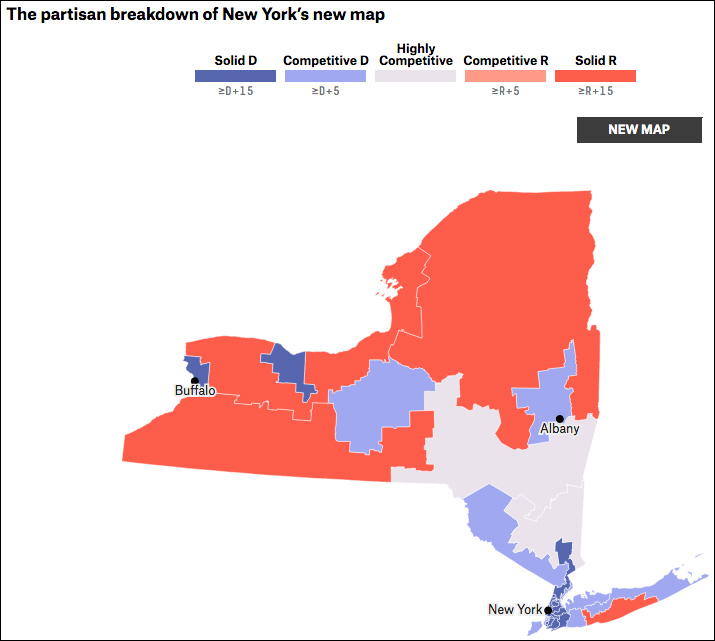By Jim Ellis — Thursday, Nov. 10, 2022
Senate

Can former Nevada Attorney General and 2022 Senate candidate, Adam Laxalt (R) pull out a win in the Silver State?
With Sen. Mark Kelly (D) poised to win his yet-to-be-called race in Arizona, whether or not the trends change in Nevada will be the next happening to observe. Currently, former Attorney General Adam Laxalt (R) leads Sen. Catherine Cortez Masto (D) by just under two percentage points, or 15,812 votes with approximately 84 percent of the vote recorded.
CNN has projected that the Georgia race between Sen. Raphael Warnock (D) and Republican Herschel Walker will advance to a secondary runoff election because neither man will reach the 50 percent plateau. Currently, with 99 percent of the votes tabulated, Sen. Warnock’s edge over Walker is 49.2 to 48.7 percent, a margin of 17,500 votes.
House
House: Majority Count in Limbo — Several congressional race projection calls were issued yesterday, and Republicans now have 209 declared seats as compared to the Democrats’ 191. Of the 35 uncalled, 17 are clearly headed to one party or the other. The 18 uncalled campaigns that are purely undecided will put the final touches on the House majority. At this point, the Republicans reasonably look to have clinched 212 seats and the Democrats’ 204 before the final 19 seats are finally declared.
Colorado: Key to Majority — With the House majority definitely on the line, and the winning party ending close to the 218 minimum control mark, two races in the Centennial State of Colorado could be key to determining the final outcome.
In the state’s western slope 3rd District, controversial Rep. Lauren Boebert (R-Silt), who has been trailing her Democratic opponent, former Aspen City Councilman Adam Frisch, since the beginning of the count has now pulled to within just 64 votes with still many votes outstanding. According to the CNN count, five percent of the vote remains.
Colorado received a new district in national reapportionment and the new 8th District is acting just as it was intended, as a toss-up seat. The latest count finds Democratic state Rep. Yadira Caraveo (D-Eastlake) leading state Sen. Barbara Kirkmeyer (R-Weld County) by 899 votes. This race, too, has tightened and CNN reports that only 78 percent of the vote is counted.
New York: Red Wave on Long Island — Though we did not see a “red wave” materialize nationally, we surprisingly saw one on Long Island. In fact, the Island’s two Democratic open seats flipped, the third remained in the Republican column, and Rep. Andrew Garbarino (R-Sayville) was re-elected to a second term.
With Rep. Lee Zeldin (R-Shirley) not seeking re-election in order to campaign for governor, Republican Nick LaLota was declared the winner of his open 1st District, the east Long Island open seat. In the 3rd District, also open because the incumbent, Congressman Tom Suozzi (D-Glen Cove), unsuccessfully ran for governor and lost the Democratic primary to incumbent Kathy Hochul, Republican George Santos was declared the winner.
Finally, in what proved to be the Island’s biggest upset, former Hempstead Town Councilman Anthony D’Esposito will succeed retiring Rep. Kathleen Rice (D-Garden City), who chose not to seek a fifth term. D’Esposito was declared the victor over former Hempstead Town Supervisor Laura Guillen (D), who was considered a big favorite in the D+10-rated district.



